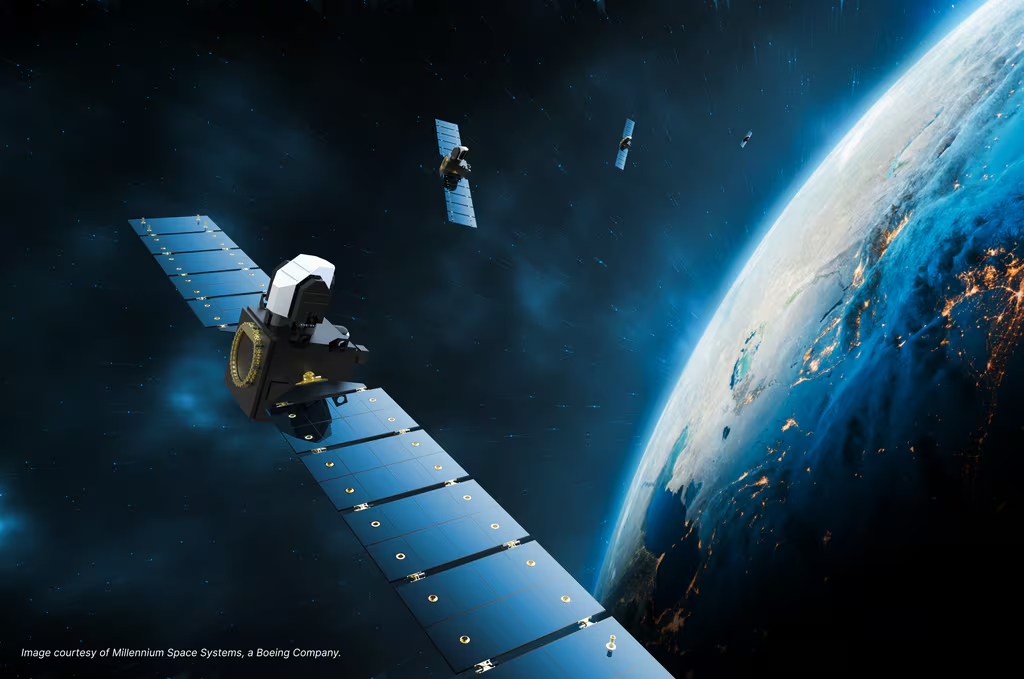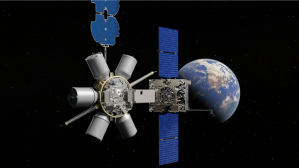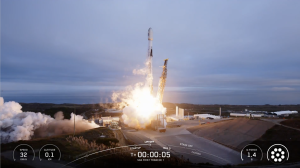NRO’s new proliferated spy satellite constellation moving into ‘operational phase’

The National Reconnaissance Office is transitioning its new proliferated constellation of surveillance and intelligence-gathering satellites from initial demonstration phases to using them in real operational settings, NRO Director Chris Scolese said Thursday.
Since May, NRO has completed three of six launches planned for 2024 that have put operational satellites on orbit for the proliferated constellation, which is expected to enhance the office’s ability to capture and deliver space-based data for military users. Prior to launching the first batches of operational satellites this year, NRO began a series of on-orbit demonstrations with prototypes in June 2023 to verify the constellation’s performance and cost.
“From last June to December this year, we’ll have probably launched 100 satellites. So, we are going from the demo phase to the operational phase, where we’re really going to be able to start testing all of this stuff out in a more operational way,” Scolese said at an event hosted by the Center for Strategic and International Studies.
Envisioned as a constellation comprising hundreds of satellites stationed across multiple orbits, NRO’s proliferated architecture is part of the office’s broader plan to drastically increase the number of space vehicles it operates over the next decade. The shift to larger constellations of low-cost satellites is one happening across the space sector, including both in the national security and commercial industries.
An NRO spokesperson told DefenseScoop that the office has launched over ten missions related to the proliferated constellation since mid-2023. Additional launches are expected to fill out the constellation through 2028, according to NRO.
“The purpose of this proliferated architecture is to increase revisit rates, enhance NRO’s coverage, and capture and deliver — by orders of magnitude — more data to our users than ever before,” the spokesperson said.
Scolese emphasized that a key benefit of the proliferated constellation will be its ability to increase NRO’s revisit rates — or the ability to repeatedly take images of a location over a period of time — and deliver that intelligence directly to warfighters.
“We need to have persistence, or fast revisit. Persistence you get by going into higher orbits, but that means you need much, much larger apertures in order to accomplish whatever the mission is,” he said. “Or you can proliferate your architecture, put more satellites up there, so that a satellite is always coming over an area within a given, reasonable amount of time that’s needed by the users.”
The constellation is enabled by a burgeoning commercial space industry able to build hundreds of satellites at lower costs than before, Scolese added. NRO is able to leverage commercial space vehicles for its own missions by adapting them with additional military-specific sensors and systems, he said.
As NRO moves into using the proliferated satellites in operations, the office is also looking at how it can leverage artificial intelligence, machine learning and automation to help operators in tasking the satellites and processing intelligence they collect, Scolese said.
“When it comes to tasking the satellites, asking them what to do and figuring out which satellite is the best one to do it — or which combination is — that’s where we’re taking advantage of advanced processing techniques, [and] some of the techniques in artificial intelligence and machine learning, to do that,” he noted.






